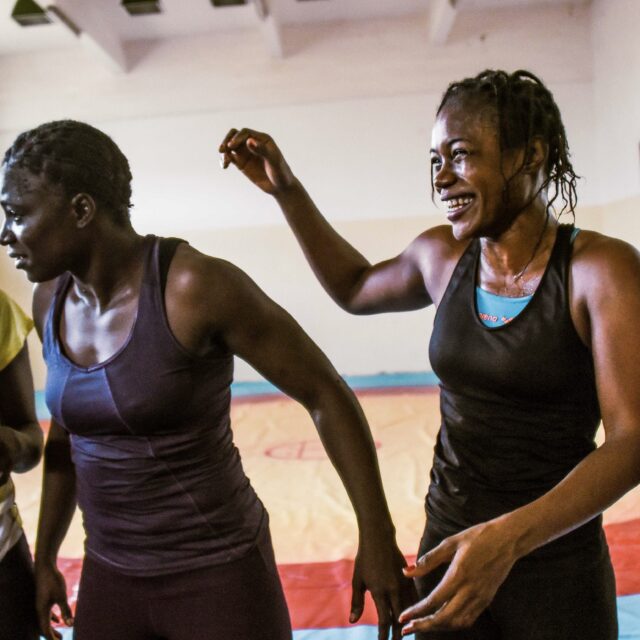By March 2020, UNESCO reported nearly 3 million students across the world had their education disrupted due to COVID-19 after just 13 countries saw school closures. By April 2020, 194 countries instituted countrywide school closures affecting 91% of enrolled learners.
Disruptions to students’ academic years can have extreme consequences. Just three months of missed schooling can result in 1.5 years of learning loss years later. This is the impact COVID-19 is having on school-aged boys and girls across the globe.
Unfortunately, for girls, the impact of education loss during and even after COVID-19 closures is even greater. In fact, Malala Fund research estimates that as a result of the pandemic, 20 million girls in developing countries may never return to the classroom. Here’s a look at why.
Global school closures
Circumstances prior to the onset of COVID-19 already included a global learning crisis. In low-income countries, 90% of children cannot proficiently read. This, in essence, is the global learning crisis, and was already damming before COVID-19.
This could get a lot worse. At the peak of the pandemic, 1.6 billion enrolled children were pushed out of school as countries shut their doors. A Save the Children survey indicates that 8 out of 10 children surveyed in 37 countries reported that they have learned very little or not at all since the onset of COVID-19. At least one-third of the world’s school children cannot access remote learning. The digital divide, particularly when it comes to distance learning, could deepen with COVID-19. Increased poverty rates in various countries have already resulted in difficulties in accessing media and the internet, which might only be available in urban areas.
For girls in marginalized communities across the globe, these effects can be even greater. School-aged girls in vulnerable communities throughout the world don’t have “access to quality education and distance learning opportunities,” and as a result, could be disproportionately impacted by the effects of the pandemic now and in the future.
We’ve seen this before
Prior to COVID-19, the past 20 years saw the number of girls not enrolled in school drop by 79 million globally. This was a result of decades of efforts to get more girls into the classroom and to narrow the gender gap in access to education. But today’s pandemic is putting all of that progress at risk.
We’ve seen the impact that school closures due to health crises have on girls and their education. During the 2014-2015 Ebola outbreak, over 10,000 schools closed in Guinea, Sierra Leone, and Liberia, which impacted almost 5 million school children. By the time schools reopened, students collectively had lost “an approximate 1,848 hours of education.”
The impact was even more severe for girls. Already before the Ebola outbreak, school-aged girls in Guinea had only completed 0.9 years worth of school compared to boys, who completed an average of 2.7 years of schooling; and in Sierra Leone, girls only received an average 1.8 years of school compared to boys, who received an average of four years.
With COVID-19, this disproportionate impact on girls’ and boys’ education is expected to become even greater. A loss of six months of education because of the pandemic will disproportionately impact school-aged girls in“low- and lower-middle income countries.” In fact, 50% of their total years of education could be lost. That’s half of what girls’ education could be under normal circumstances.
Even more so, the lasting effects of the COVID-19 pandemic could further impact gender gaps in learning due to deprioritization of education. During the Ebola outbreak, many girls in Liberia became the sole breadwinners for their families. Even after the crisis had ended, for those who re-enrolled in school, this affected their school attendance — providing for their family trumped attending school.
Teen pregnancy also plays a factor in girls not returning to school. COVID-19 has forced schools to close, and such closures often “result in girls spending more time with men and boys” compared to when they are in school, which can lead to “engagement in risky sexual behavior and increased risk of sexual violence and exploitation.” Ultimately, this can lead to an increase in teen pregnancies and affect girls going back to the classroom. As it stands with the pandemic, up to one million girls in sub-Saharan Africa may never go back to school because of pregnancy during COVID-19 closures.
With these factors all playing a role, COVID-19 could result in severe outcomes and disproportionate effects in girls’ education — 20 million girls could potentially be out of school even when this pandemic is over, and many more will have lost out on months of learning.
But if governments act now, these effects can be mitigated.
Preventing the education divide
By governments taking action today, the impact of COVID-19 on girls’ education can be lessened. A recent report indicates that two-thirds of poorer countries have decreased education budgets since COVID-19 began. Governments must commit to protecting and expanding education budgets, and they can start by fully funding at least $5 billion for the Global Partnership for Education. Governments and policymakers can also include gender in school reopening plans and ensure girls still have the means to continue learning while at home. The boys and girls of today are the future of tomorrow, and investing in and giving attention equally to their respective education will help us all come out on top post-pandemic.



